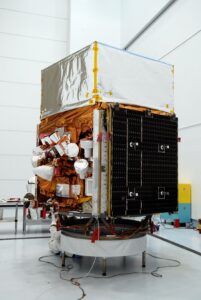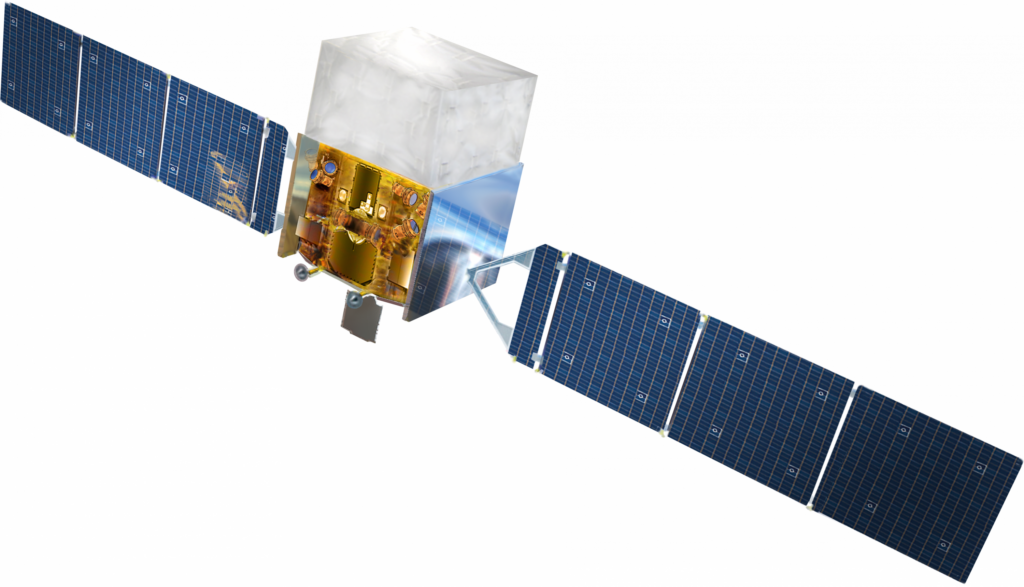Fermi-LAT
The Fermi Large Area Telescope
The Fermi Large Area Telescope (Fermi-LAT) is a gamma-ray experiment installed on the Fermi Gamma-ray Space Telescope. It has been detecting photons in the energy range between 30 mega-electronvolts (MeV) and 300 giga-electronvolts (GeV) since 2008.


In contrast to ground-based experiments, the Fermi-LAT has a very large field of view: at any given moment, it can observe approximately 20% of the sky. In survey mode, it covers the entire sky in two orbits around the Earth, which takes about 3 hours.
The large field of view and nearly continuous monitoring of the whole sky make it an ideal instrument to study both constant and transient sources, such as flares of supermassive black holes in other galaxies, gamma-ray bursts, and solar flares.
Fermi-LAT has detected thousands of gamma-ray sources in our Galaxy and beyond. Most of these sources are active galactic nuclei (AGN), which are supermassive black holes that accrete matter and emit jets pointing towards the Earth. The LAT has also detected more than 200 pulsars in our Galaxy, significantly enhancing our understanding of these fascinating objects (the previous gamma-ray telescope, EGRET, detected only 6). Additionally, Fermi-LAT has made some unexpected discoveries, such as gamma-ray emission from novae.
Beyond point source observations, Fermi-LAT has made an exquisite measurement of diffuse gamma-ray emission, most of which originates from interactions of Galactic cosmic rays with interstellar gas and radiation fields. The study of diffuse emission has also led to surprising discoveries, such as the massive gamma-ray-emitting bubbles above and below the Galactic center and the excess of gamma-ray emission near the Galactic center itself.
Fore more information, you can visit the project webpage.
Fermi-LAT at ECAP
At ECAP we work on diffuse gamma-ray data analysis and interpretation of the large-scale emission components, such as the Fermi bubbles and the Galactic center excess. We also work on data-driven methods for point source analysis, such as the wavelet transform.
If you are interested in a Bachelor or Master thesis with our Fermi-LAT group, please contact:
An overview of all thesis topics can be found here.
